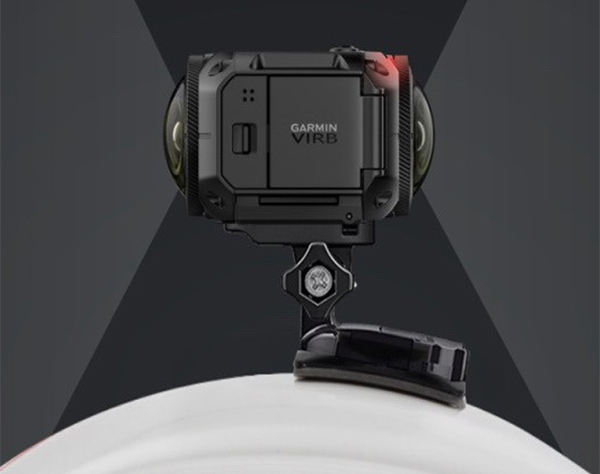OpenSpace technology makes capturing project progress as simple as walking the site with a camera on a hard-hat. Edward Carolan, director of Lindford Consulting, explains how the cloud-based visual record can help contractors avoid disputes, improve build quality and reduce the burden on construction managers.
What is OpenSpace?
It is a system that allows contractors to regularly capture project progress then upload and interrogate the digital visual record in the cloud. Unlike other methods of site capture, such as laser scanners, it is extremely easy to use, a worker simply straps a Garmin 360 camera onto a hard hat, hits record in the OpenSpace app and walks a specified route.
The software builds up a complete 360-degree record of what’s happening at any point on the site, which is navigated using a Google Streetview-style interface.

A number of consultants we’re talking to are already writing OpenSpace into contracts requiring whoever wins the tender to operate the software on a daily basis ready for use by the developer/end user operator, and the builder going forward. This will create a holistic view of the project for both client and contractor.– Edward Carolan
Why is Lindford Consulting interested in the technology?
We have an agreement to deliver OpenSpace in the UK and Ireland, we also promote it as best practice on construction projects.
Our expertise is in contractual and commercial advice, primarily focused on dispute avoidance and dispute resolution. Dispute problems on construction projects often arise from poor record keeping around progress reporting, defects notified, or delays etc, and over-reliance on information captured on paper documents or in photographs.
OpenSpace is able to capture every detail on your site, with no added labour, while eliminating inaccurate pictures and sketchy write-ups. The records can be accessed from anywhere and shared with your project teams.
Which contractors have you worked with to implement it?
We introduced OpenSpace to BCM Construction and ISG. BCM uses it regularly on rail projects to quickly record progress in limited time windows. Unlike general construction projects, rail site access is only possible through possessions, at times when the track not being used, or under certain specific conditions and circumstances. The hard-hat camera can quickly record and relay the data rather than operatives having to gain access for a lengthy inspection.
The entire project team and their client view the information on the rail lines, including work underway and completed. In terms of access to information, it provides everything they need to know about the project without having to actually visit it, if necessary.
How frequent is data capture?
Our recommendation is to capture sites on a daily basis – the more frequent the better information you have as a business. ISG is using the system on a fit-out project in London and in some instances have recorded progress twice a day.
How does OpenSpace assess progress/differences over time?
The recording is digitally overlaid on to a site plan. It’s then possible to click on any location on the 2D plan and pull up the 360 images for that location. You can input two different dates and times, of the same location and compare the panoramas against each other side-by-side on screen to note changes
In a similar process, you can upload the 3D BIM model of the project, linked to programme data, and compare the panorama of what has been built against what should have been built at that time as per the design. This makes it possible to determine if a change has happened for design reasons or because something was missed, or delayed.
Has the tool had a concrete impact on the number of disputes on jobs?
It’s still early days, but the vast amount of information captured should help avoid disputes occurring in the future. The increased transparency of information is a significant factor, now parties are more willing to sit down and talk about issues because they can see them on a screen.
The more people can see things visually, the more likely they are to agree on something because the facts are indisputable. In contrast, paper-based documentation is almost always disputable, because of factors such as the individual who wrote it and who they work for and their motivations etc. They say a picture can tell a thousand words and OpenSpace is evidence of that.

OpenSpace requires a worker to strap a Garmin 360 camera onto a hard hat
Does it impact on quality control and assurance?
Absolutely, it helps improve the quality of what subcontractors are delivering as well as the health and safety aspects of managing sites. An untidy site is an unsafe site, when things are left lying around people trip over them and accidents occur. If we can capture that information on a daily basis, we can quickly identify hazards, then pick up the phone to a subcontractor and get them to rectify it immediately.
From a commercial point of view, OpenSpace can help improve cash flow for subcontractors. Frequently on projects, subcontractors make an application for payment, which is knocked back by 10 or 20% on the basis that the QS hasn’t had time to go out on site and assess the work.
With OpenSpace in place, the main contractor and subcontractor QSs can quickly measure work, gain assurance it was undertaken and pay the subbie in full. Factors like this indicate a potential major improvement in relationships in future.
Does the fact anyone can wear the camera reduce staffing requirements?
The construction manager or project manager can send someone out to walk the job along a specific route rather than have to do it themselves, which frees up their time for other duties. They can then review the site progress later. Health and safety professionals within the team don’t have to be on site every single day, they can just log on to the cloud and view the daily capture.
How might the system improve in future?
We’ve been talking to a client for a private residential project who wants to use OpenSpace to capture the construction process and exploit it post-handover during operation. It will give them a record of exactly what’s been installed to refer to when repairs or maintenance are required.
They plan to continue to record the state of the building after new work is completed. Capturing and updating that information for the life of the building will save on time and costs associated with additional inspections and survey work.
We see a big opportunity for an employer to utilise OpenSpace to access site information. A number of consultants we’re talking to are already writing OpenSpace into contracts requiring whoever wins the tender to operate the software on a daily basis ready for use by the developer/end user operator, and the builder going forward. This will create a holistic view of the project for both client and contractor.
Other firms offer automated site capture using robots – is that not a more efficient solution?
Those systems require an operator, either working at the location or remotely, which can incur extra costs. Humans are better at navigating around construction sites, which are inherently complex, with confined areas, changes in level and unpredictable obstacles.
Comments
Comments are closed.
















It is a key recording system to review the progress of the site at any time for different disciplines. However, it is more important, especially for groundwork and critical projects.
Progress record keeping is an important factor on any construction site but I am not convinced that this new technology will help avoid disputes particularly those that are time related. However, what it will do is provide invaluable information to allow a delay analysis to be more accurately compiled.